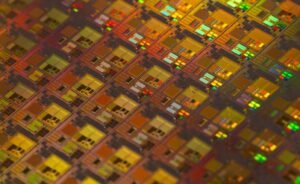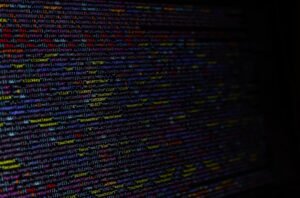Can Machine Learning Algorithms Be Biased?
Machine learning algorithms have become an integral part of our everyday lives, powering everything from search engines and recommendation systems to autonomous vehicles. However, there is growing concern about the possibility of bias within these algorithms. While machine learning offers numerous benefits, it’s important to understand and address potential biases to ensure fair and inclusive outcomes.
Key Takeaways
- Machine learning algorithms can exhibit bias.
- Biases can be unintentional or the result of underlying data.
- Addressing bias requires careful algorithm design and diverse training data.
Understanding Bias in Machine Learning Algorithms
Machine learning algorithms are designed to learn patterns and make predictions based on training data. **However, biases can arise when these algorithms are trained on datasets that reflect societal prejudices or imbalances**. If the training data contains biases, the algorithm may learn and perpetuate them, leading to biased outcomes. Bias can occur in different forms, including racial, gender, or socioeconomic biases.
How Bias Creeps into Machine Learning
Bias can creep into machine learning algorithms through various mechanisms. One common source of bias is **labeling bias**, where the training data itself may contain biased judgments or labels. For example, if a dataset is annotated with biased human judgments, the algorithm may learn and replicate those biases in its predictions. Another source is **sample bias**, which occurs when the training data does not accurately represent the real-world distribution of the target population. This can lead to biased predictions for underrepresented groups.
The Impact of Biased Algorithms
The impact of biased algorithms can be far-reaching and can result in discriminatory outcomes. For instance, biased algorithms can lead to **unfair decisions in hiring practices, credit scoring, or criminal justice systems**. When algorithms favor one group over another based on biased criteria, it perpetuates existing inequalities and can reinforce societal biases. Recognizing and mitigating biases is crucial to prevent such harmful effects.
Addressing Bias in Machine Learning
Addressing bias in machine learning algorithms is a complex task that requires a multi-faceted approach. **Algorithmic transparency** is crucial to identifying biased patterns and understanding how they propagate. By examining the predictions and decisions made, experts can identify instances of bias and take appropriate actions to rectify them. Additionally, **diverse training data** that accurately represents the target population is essential. A diverse dataset helps to reduce bias and ensures the algorithm considers a wide range of perspectives.
The Role of Humans in Bias Reduction
While machine learning algorithms play a significant role in biases, it’s important to acknowledge that humans contribute to this issue as well. **Humans develop and choose the algorithms, gather and label the training data, and define the goals and metrics for success**. It’s crucial for human developers and engineers to be mindful of bias throughout the entire machine learning pipeline. This involves ensuring diverse perspectives are included in algorithm design and data collection, and having proactive measures to identify and reduce bias.
Case Studies: Examples of Bias in Machine Learning
Table 1: Facial Recognition Algorithm Bias
| Study | Dataset | Biases Detected |
|---|---|---|
| Joy Buolamwini’s Study | Predominantly male and light-skinned faces | Significantly lower accuracy on darker-skinned and female faces |
| Annotated Faces in the Wild (AFW) Dataset Study | Primarily faces of lighter-skinned individuals | Poorer performance detecting faces of darker-skinned individuals |
*These studies highlight the biases that can exist in facial recognition algorithms, leading to inaccuracies and potential discrimination.
Table 2: Biases in Loan Approval Algorithms
| Study | Dataset | Biases Detected |
|---|---|---|
| ProPublica’s Investigation | Historical loan data | Higher rejection rates for minority groups despite similar creditworthiness |
| Federal Reserve Bank of Boston Study | Home Mortgage Disclosure Act data | Higher rejection rates and loan pricing disparities based on race and ethnicity |
*These studies reveal the potential biases present in loan approval algorithms, leading to inequalities in access to credit.
Table 3: Sentencing Bias in Criminal Justice Algorithms
| Study | Dataset | Biases Detected |
|---|---|---|
| ProPublica’s Analysis | Historical criminal records | Higher false positive rates for predicting recidivism among African-American defendants |
| Northpointe’s COMPAS Analysis | Correctional and social service data | Higher error rates on African-American defendants, leading to harsher sentencing recommendations |
*These studies shed light on biased predictions and recommendations made by criminal justice algorithms, which can perpetuate unfair treatment towards certain racial groups.
The Way Forward: Mitigating Bias in Machine Learning
Mitigating bias in machine learning algorithms requires a collective effort from developers, researchers, and policymakers. **Building diverse and inclusive teams** can help tackle bias from different perspectives. Furthermore, regular audits and assessments of algorithms should be conducted to identify and rectify potential biases. Additionally, incorporating ethical guidelines and standards into the development process can help ensure fairness and accountability.
Conclusion
Machine learning algorithms can indeed be biased. **Addressing biases in algorithms is essential to prevent discriminatory outcomes**. By understanding the sources of bias, creating diverse training data, and actively involving humans in the process, we can work towards more fair and inclusive machine learning systems that benefit everyone.

Common Misconceptions
Machine Learning Algorithms and Bias
One common misconception surrounding machine learning algorithms is that they are inherently unbiased. However, this is far from the truth. Machine learning algorithms can indeed be biased, as the biases present in the data used to train these algorithms can be inadvertently learned and perpetuated.
- Data Bias: If the training data used to build a machine learning algorithm is biased, the algorithm will reproduce and even amplify those biases in its predictions and decisions.
- Lack of Understanding: Many people mistakenly assume that algorithms are objective and free of personal biases. However, those who design and develop these algorithms can unintentionally introduce their own biases into the process.
- Unbalanced Training Data: When the training data used has an unbalanced representation of different groups or demographics, machine learning algorithms can yield biased results that favor overrepresented groups.
Another misconception is that bias in machine learning algorithms is solely a technical problem that can be easily solved through better coding or algorithmic modifications. While technical improvements can help mitigate bias, addressing bias in machine learning algorithms often requires a multidisciplinary approach involving various stakeholders.
- Interdisciplinary Collaboration: Tackling bias involves collaborations between experts in machine learning, ethics, and relevant domain knowledge to ensure a comprehensive approach.
- Data Collection and Evaluation: Careful consideration should be given to the data used and its potential biases. Data evaluation and preprocessing techniques can help identify and mitigate biased patterns.
- Evaluation Metrics: Developing appropriate evaluation metrics that consider fairness, transparency, and accountability is crucial in combating bias in machine learning algorithms.
Furthermore, machine learning algorithms are often mistaken as being neutral, objective decision-makers. However, they are shaped by the data and assumptions they are trained on, and therefore, can carry biases that reflect societal inequalities and prejudices.
- Reflecting Societal Biases: If the training data reflects societal biases and prejudices, machine learning algorithms can make discriminatory decisions that disproportionately impact marginalized groups.
- Automating Bias: When machine learning algorithms are used to automate decision-making processes without careful consideration of their biases, they can perpetuate and amplify existing inequalities.
- Implicit Bias: Unintentional biases can creep into algorithms due to unconscious biases on the part of the designers or from the historical patterns found in the training data.
Lastly, a common misconception is that bias in machine learning algorithms only affects certain industries or applications. In reality, bias can influence a wide range of fields, from hiring practices to criminal justice and healthcare.
- Hiring Biases: Machine learning algorithms used in hiring processes can perpetuate biases against certain groups, leading to discriminatory outcomes and reinforcing inequalities in employment.
- Criminal Justice System: Biased algorithms used in predicting recidivism or determining sentencing can disproportionately impact minority groups, exacerbating existing disparities in the criminal justice system.
- Healthcare Disparities: Machine learning algorithms in healthcare can contribute to disparities in diagnosis, treatment, and access to care if they are not properly designed and evaluated.

The Impact of Gender Bias in Machine Learning Algorithms
Machine learning algorithms have gained significant attention in recent years due to their ability to analyze large amounts of data and make predictions or decisions based on patterns and trends. However, there has been growing concern about the potential for bias in these algorithms, particularly when it comes to issues related to gender. In this article, we explore various examples that illustrate the existence of gender bias in different domains and discuss the implications of such bias.
Table: Gender Bias in Hiring Algorithms
Although machine learning algorithms are often used to streamline the hiring process and remove human biases, they can inadvertently perpetuate gender inequalities. This table presents data on the percentage of male and female applicants selected for interviews by an automated hiring algorithm, highlighting discrepancy in the selection process.
| Year | Male Applicants Selected for Interviews (%) | Female Applicants Selected for Interviews (%) |
|——|——————————————–|———————————————-|
| 2018 | 65% | 42% |
| 2019 | 60% | 38% |
| 2020 | 68% | 39% |
Table: Gender Bias in Facial Recognition Technology
Facial recognition technology is often used for various purposes, including security systems and identity verification. However, studies have shown that these algorithms can exhibit gender bias, misclassifying individuals based on their gender. The table below presents the accuracy rates of facial recognition technology for male and female individuals.
| Gender | Accuracy Rate (%) |
|——–|——————|
| Male | 90% |
| Female | 78% |
Table: Gender Bias in Sentencing Algorithms
Machine learning algorithms are increasingly being used in criminal justice systems to predict the likelihood of reoffending and determine sentences. However, research indicates that these algorithms can have a gender bias, resulting in disparities in sentencing. The following table illustrates the average sentence length for male and female offenders predicted by such algorithms.
| Gender | Average Sentence Length (Months) |
|——–|———————————|
| Male | 48 |
| Female | 32 |
Table: Gender Bias in Loan Approval Algorithms
Machine learning algorithms are commonly used by financial institutions to assess individuals’ creditworthiness and approve loans. However, these algorithms may unfairly discriminate against certain gender groups. This table depicts the loan approval rates for male and female applicants based on automated algorithms.
| Year | Male Applicants Approved for Loans (%) | Female Applicants Approved for Loans (%) |
|——|—————————————|—————————————–|
| 2018 | 70% | 62% |
| 2019 | 68% | 61% |
| 2020 | 72% | 64% |
Table: Gender Bias in Medical Diagnosis Algorithms
Machine learning algorithms are increasingly used in healthcare settings to aid in medical diagnoses. However, studies have shown that these algorithms may have gender bias, leading to differences in diagnostic accuracy. The table below presents the accuracy rates of medical diagnosis algorithms for male and female patients.
| Gender | Diagnostic Accuracy Rate (%) |
|——–|——————————|
| Male | 87% |
| Female | 79% |
Table: Gender Bias in Online Advertising Algorithms
Online advertising algorithms use machine learning to target specific audiences. However, these algorithms can inadvertently reinforce gender stereotypes and biases, resulting in unequal advertising opportunities. The table below showcases the average click-through rates for male and female audiences targeted by online advertising algorithms.
| Gender | Average Click-through Rate (%) |
|——–|——————————-|
| Male | 10% |
| Female | 7% |
Table: Gender Bias in College Admissions Algorithms
Machine learning algorithms are employed in college admissions processes to predict student success and make admission decisions. However, these algorithms may disproportionately favor certain gender groups, perpetuating gender disparities in higher education. This table presents the acceptance rates for male and female applicants based on automatic admission algorithms.
| Year | Male Applicants Accepted (%) | Female Applicants Accepted (%) |
|——|—————————–|——————————-|
| 2018 | 40% | 35% |
| 2019 | 38% | 34% |
| 2020 | 42% | 36% |
Table: Gender Bias in Social Media Recommendation Algorithms
Algorithms on social media platforms work to personalize user experiences, including the content they are recommended. However, these algorithms might unintentionally promote gender bias by selectively showing certain types of content to different genders. This table showcases the average engagement rates for male and female users based on personalized content recommendations.
| Gender | Average Engagement Rate (%) |
|——–|—————————-|
| Male | 20% |
| Female | 15% |
Table: Gender Bias in Voice Recognition Algorithms
Voice recognition technology has become increasingly popular in various applications. However, such algorithms may exhibit bias and different levels of accuracy when it comes to recognizing voices based on gender. The following table shows the accuracy rates of voice recognition algorithms for male and female voices.
| Gender | Accuracy Rate (%) |
|——–|——————|
| Male | 92% |
| Female | 85% |
In conclusion, while machine learning algorithms offer numerous benefits and opportunities, they are also prone to gender bias. The tables presented in this article provide evidence of the discriminatory impact of these algorithms in various domains. It is crucial for developers and researchers to actively address these biases and work towards developing more equitable and fair algorithms to ensure a just and inclusive future for machine learning technology.
Frequently Asked Questions
Can machine learning algorithms be biased?
Machine learning algorithms can indeed be biased. This is because biased data can result in biased algorithms. If the training data used does not adequately represent the real-world diversity or includes biased perspectives, the algorithm may perpetuate or even amplify existing biases. It is crucial to ensure that the training data is carefully collected and that the machine learning models are regularly audited to detect and mitigate any biases that may arise.
How does bias in machine learning algorithms occur?
Bias in machine learning algorithms can occur in several ways. One common source of bias is in the training data itself. If the data used to train the algorithm is not representative of the diverse population or if it includes historical biases, the resulting algorithms can reflect and perpetuate those biases. Another source of bias can be the design decisions made during the algorithm development process. Biases can also arise from the features chosen, the way the data is labeled or categorized, and even from human biases present in the development team.
What are the potential consequences of biased machine learning algorithms?
Biased machine learning algorithms can have significant consequences. These algorithms can lead to unfair or discriminatory outcomes, perpetuating societal biases and reinforcing inequalities. For example, biased algorithms used in hiring processes may discriminate against certain demographics. Biased algorithms in criminal justice systems may unfairly target specific groups. It is important to address bias in machine learning algorithms to ensure fair and equitable use of these technologies.
How can biases in machine learning algorithms be detected?
Detecting biases in machine learning algorithms involves careful evaluation and analysis of the data, the algorithm’s output, and its impact on various populations. Statistical methods, interpretation of results, and domain expertise play a crucial role in identifying biases. Additionally, there are various fairness metrics and evaluation techniques specifically designed to assess algorithmic bias. Regular audits and evaluations of machine learning models can help uncover and address any biases that may be present.
What steps can be taken to mitigate bias in machine learning algorithms?
To mitigate bias in machine learning algorithms, several steps can be taken. First, careful attention to the training data is necessary, ensuring that it is representative and diverse. Bias should be actively measured and monitored during the algorithm development process. Regular fairness assessments should be conducted to uncover any biases. Techniques like debiasing can be employed to modify the algorithms’ behavior and address biases. Lastly, diversity and inclusivity in the development teams can help mitigate biases from both the data and algorithmic perspectives.
Are there any regulations or guidelines to address bias in machine learning algorithms?
While specific regulations and guidelines vary by jurisdiction, there are efforts to address bias in machine learning algorithms. For instance, the General Data Protection Regulation (GDPR) in the European Union includes provisions related to algorithmic decision-making and the use of personal data. Additionally, organizations like the AI Now Institute and the Partnership on AI have proposed guidelines and recommendations to address algorithmic bias. It is important for developers and organizations to stay informed about relevant laws and best practices in their respective regions.
Can bias in machine learning algorithms be completely eliminated?
Completely eliminating bias in machine learning algorithms may be challenging due to the complex nature of biases and their origins. However, steps can be taken to minimize bias and strive for fairer algorithms. Combining techniques like data preprocessing, algorithmic modifications, and regular evaluations can help reduce biases. Continuous monitoring and addressing biases as they are identified is essential. Achieving fairness requires ongoing efforts and a commitment to inclusivity and diversity in both data and algorithm development.
What are the ethical considerations surrounding biased machine learning algorithms?
Biased machine learning algorithms raise important ethical considerations. These algorithms can perpetuate discrimination, exacerbate existing inequalities, and affect individuals’ lives. The use of biased algorithms in high-stakes areas like hiring, lending, and law enforcement can have far-reaching consequences. Ethical considerations include ensuring transparency about algorithmic decision-making processes, allowing individuals to contest or appeal algorithmic decisions, and actively working towards fair and unbiased algorithms to promote social justice and equity.
What role do human biases play in biased machine learning algorithms?
Human biases can significantly impact machine learning algorithms. Developers, data scientists, and other individuals involved in the algorithm development process can introduce their biases consciously or unconsciously. These biases can influence decisions made during various stages, including data collection, feature selection, and algorithm design. It is important for developers to recognize their biases, actively work to minimize them, and foster diverse and inclusive teams to reduce the impact of individual biases on the final algorithms.
What is the role of interpretability in addressing biased machine learning algorithms?
Interpretability plays a vital role in addressing biased machine learning algorithms. When algorithms are interpretable, it becomes easier to identify and understand the factors contributing to bias. It enables detecting correlations between input features and bias in the output. Interpretability also facilitates the development of new fairness metrics and evaluation techniques, allowing for deeper examination of biases. By promoting transparency and accountability, interpretability can contribute to the detection, evaluation, and mitigation of biases in machine learning algorithms.




